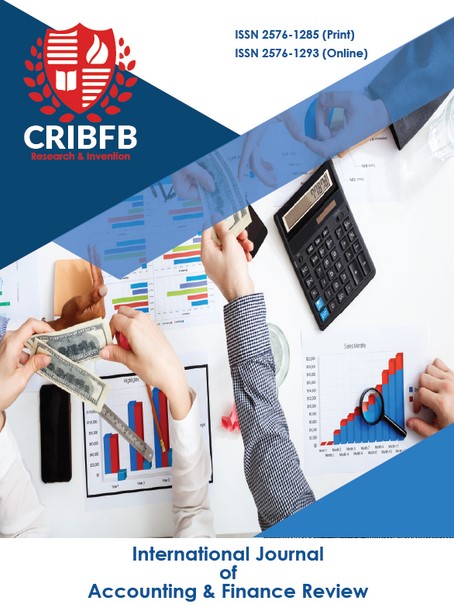Testing Multi-Factor Models in ADRs: Emerging Market vs. Developed Market
Main Article Content
Abstract
This paper tests whether the Carhart four-factor model and the Fama-French five-factor model can explain variation in returns of 1,230 ADRs originating from six developed markets and five emerging markets. We aim to compare emerging market ADRs with developed market ADRs in terms of traditional risk factors significance, model fitness and the existence of abnormal returns. Overall, we find that substantial variations exist among ADRs by their origin-of-market. First, both models show that most of the positive abnormal returns we document accrue to emerging market ADRs, mainly Chinese ADRs. Among the risk factors, market risk premium is found to be most prevalent in both emerging and developed markets. Although we find some difference in the presence of particular risk factors employed in the four-factor vs. five-factor model, overall, there are no significant differences in the explanation power between the two models. Lastly, the low R2 values imply that both models do not work very well with the international market ADRs.
Downloads
Article Details
Section
How to Cite
References
Blau, B. M. (2017). Social trust and the liquidity of cross-listed securities. Journal of Business Research, 78, 155-171.
Boubakri, N., Cosset, J. C., & Samet, A. (2010). The choice of ADRs. Journal of Banking & Finance, 34(9), 2077-2095.
Capaul, C., Rowley, I., & Sharpe, W. F. (1993). International value and growth stock returns. Financial Analysts Journal, 49(1), 27-36.
Carhart, M. M. (1997). On persistence in mutual fund performance. The Journal of finance, 52(1), 57-82.
Chan, L. K., Hamao, Y., & Lakonishok, J. (1991). Fundamentals and stock returns in Japan. The journal of finance, 46(5), 1739-1764.
Fama, E. F., & French, K. R. (1992). The cross‐section of expected stock returns. the Journal of Finance, 47(2), 427-465.
Fama, E. F., & French, K. R. (1993). Common risk factors in the returns on stocks and bonds. Journal of Financial Economics, 33(1), 3-56.
Fama, E. F., & French, K. R. (1998). Value versus growth: The international evidence. The journal of finance, 53(6), 1975-1999.
Fama, E. F., & French, K. R. (2015). A five-factor asset pricing model. Journal of financial economics, 116(1), 1-22.
Foye, J. (2018). A comprehensive test of the Fama-French five-factor model in emerging markets. Emerging Markets Review, 37, 199-222.
Griffin, J. M. (2002). Are the Fama and French factors global or country specific?. The Review of Financial Studies, 15(3), 783-803.
Hail, L., & Leuz, C. (2009). Cost of capital effects and changes in growth expectations around US cross-listings. Journal of financial economics, 93(3), 428-454.
Hong, H., Lim, T., & Stein, J. C. (2000). Bad news travels slowly: Size, analyst coverage, and the profitability of momentum strategies. The Journal of Finance, 55(1), 265-295.
Hou, K., Xue, C., & Zhang, L. (2015). Digesting anomalies: An investment approach. The Review of Financial Studies, 28(3), 650-705.
Jegadeesh, N. (1990). Evidence of predictable behavior of security returns. The Journal of finance, 45(3), 881-898.
Jegadeesh, N., & Titman, S. (1993). Returns to buying winners and selling losers: Implications for stock market efficiency. The Journal of finance, 48(1), 65-91.
JPMorgan. (2006). ADR Reference Guide.
Kadiyala, P., & Subrahmanyam, A. (2004). Divergence of US and Local Returns in the After‐market for Equity Issuing ADRs. European Financial Management, 10(3), 389-411.
Karolyi, G. A. (2006). The world of cross-listings and cross-listings of the world: Challenging conventional wisdom. Review of Finance, 10(1), 99-152.
Liew, J., & Vassalou, M. (2000). Can book-to-market, size and momentum be risk factors that predict economic growth?. Journal of Financial Economics, 57(2), 221-245.
Nijman, T., Swinkels, L., & Verbeek, M. (2004). Do countries or industries explain momentum in Europe?. Journal of Empirical Finance, 11(4), 461-481.




